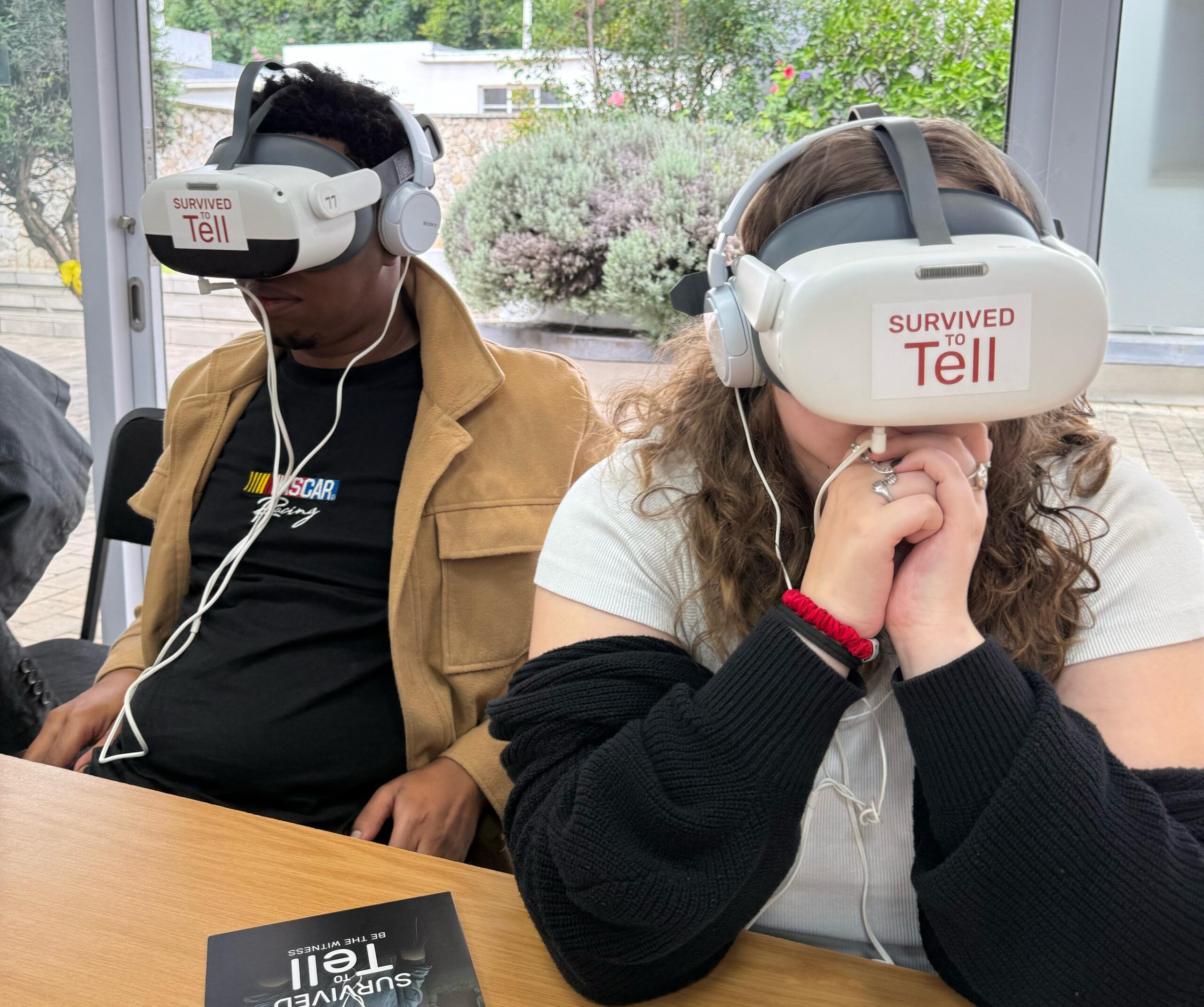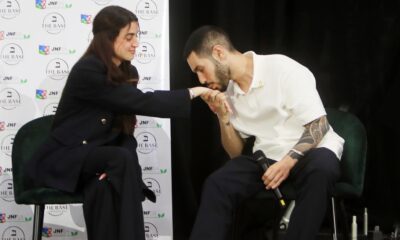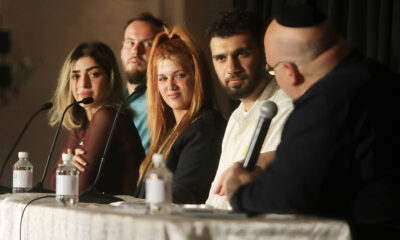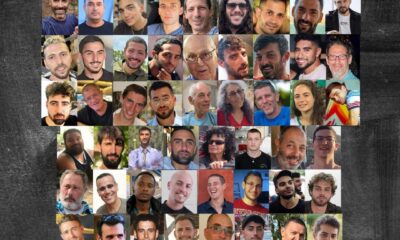
Featured Item

Virtual reality brings horror of 7 October home
You’re in the safe room on Kibbutz Be’eri where then 19-year-old Ofir Engel, his girlfriend Yuval Sharabi, and her whole family including the dog were huddled together on 7 October 2023, when Hamas terrorists blew up the entrance to their house and stormed in.
The South African Jewish community came as close as it could to experiencing the horror of what happened on that black Shabbat through the Survived to Tell virtual reality (VR) experience held over a few days from 27 March. They could feel and see the surroundings while listening to the testimony of Engel and four other 7 October survivors on a visit to South Africa. The survivors and VR experience were brought to South Africa by the South African Zionist Federation, World Mizrachi, Israel Centre, The Base, and Israel Is.
As Engel relays the abject fear he felt when Hamas terrorists entered the so-called safe room, he is able to show the community evidence of the cruelty of their attackers. They can see the remaining blood of the Sharabi family’s dog on the floor. The terrorists killed the dog before moving the family out of the kibbutz house to realise their fate.
“They made us sit outside on the grass with the neighbours, the Shani family. Smoke was everywhere, as was the smell of gunpowder.”
The community is then taken virtually on the very road that Engel and Yossi Sharabi, his girlfriend’s father, were forced to travel by Hamas terrorists before being driven into Gaza. They were separated from the rest of the Sharabi family, and are still waiting for the body of Yossi to be returned to them.
Standing on the road, Engel says, “They put Yuval’s father inside. Yuval and I were holding hands. At first, they put us both inside, but then they signalled to her to get out. They put Amit Shani inside instead, and we drove away, speeding like crazy.”
The anguish and devastation Engel feels is palpable as the community looks back through VR at the kibbutz from the road as it gets further and further away. The last image Engel had of his girlfriend and her family before being taken into Hamas captivity was of her being flanked by two terrorists with their weapons. “I was sure they were either being kidnapped or murdered that day,” he says.
Engel was released from Hamas captivity after 54 days, while Yossi Sharabi, now confirmed to be dead, is still being held by Hamas.
The community is then transported virtually to the grounds of the Nova festival, where just hours before, in the early morning of 7 October, 29-year-old Millet Ben Haim was having the time of her life, losing herself to the music.
“I was dancing through the festival. Suddenly, the music stopped, and there were rockets and terrorists everywhere, people running to their cars,” Ben Haim says. “There were terrorists everywhere we turned. We realised we had to leave the car and run to the fields.”
After two hours of running, Ben Haim and many others who fled from the festival were lying in wait in the fields, hiding from the terrorists who had rampaged through the festival, butchering and raping everyone in their midst. The community is transported through the parking lot, where cars have been abandoned and burned, and the piles of cars go on for as far as the eye can see.
“We were running towards what looked like soldiers to try and get some help, but as we got closer, we saw they were holding a rocket-propelled grenade and we realised that we were in front of terrorists,” says Ben Haim. “We found out later on that after they murdered the soldiers, they would take their clothes to trick us,” she says, with the sound of bombing in the distance.
Crouching inside the fields with Ben Haim where she stayed until she was rescued, the community hears and experiences her fear at terrorists finding her and raping and killing her.
“I started seeing people falling,” she says. “I wanted just to give up. I didn’t have a chance. It was a nightmare when I was growing up that I would be kidnapped and couldn’t run fast enough, and that was the feeling I had.
“After a while, I knew that I couldn’t survive just thinking I was about to be rescued. Hours went by. Nobody came to save us. It just got worse and worse. And I thought, either way, we were going to die, whether by starvation and dehydration or terrorists.”
As Ben Haim continues to tell her story, the virtual audience watches as the sun sets, just like on the day when she was waiting to be rescued. She explains how, at that point, she accepted whatever fate would come her way. “I wanted to die to get away from the fear of what would happen to me if the terrorists found me,” she says.
The community is then taken virtually into the car of 40-year-old Nimrod Palmach driving south after hearing that terrorists have invaded Israel. Palmach defied his commander’s orders and went out to save lives. As the virtual audience sees the road ahead of him, Palmach explains that he has no idea what he is going into, but knows he has to do everything he can.
“I learned what was going on through deep understanding. I saw videos of Hamas shooting at police cars and people fighting against terrorists in Ofakim,” Palmach says. “I knew I had to get down south so I could try and help.”
The virtual audience is taken to one of the fields in the south of Israel, where Palmach fought terrorists for more than 15 hours on 7 October. In that field, the audience witnesses what Palmach saw that day and how little visibility he had. He explains that soon after he began fighting, “I had to film what I saw. I knew then that people wouldn’t believe what was happening to us that day. In my right hand, I had my machine gun, and in the left my phone.”
In that field, the virtual audience can see the emotional message Palmach left his children in case anything happened to him. There is a real sense of his anguish as a tear runs down his face as he tells his children, “I love you with everything I have.”
The virtual audience is then taken to Kibbutz Alumim, witnessing how it has turned to ashes and seeing visuals of destroyed houses. As Palmach tells the story of how he saw that terrorists had infiltrated the homes of people, the virtual audience moves into the safe rooms where people were butchered, standing virtually in a child’s room and looking at the floor smeared with blood.
“I saw what happened at Auschwitz, how they tortured our people before murdering them, and I look around and what Hamas did here. It’s the same thing,” Palmach tells the South African audience.










